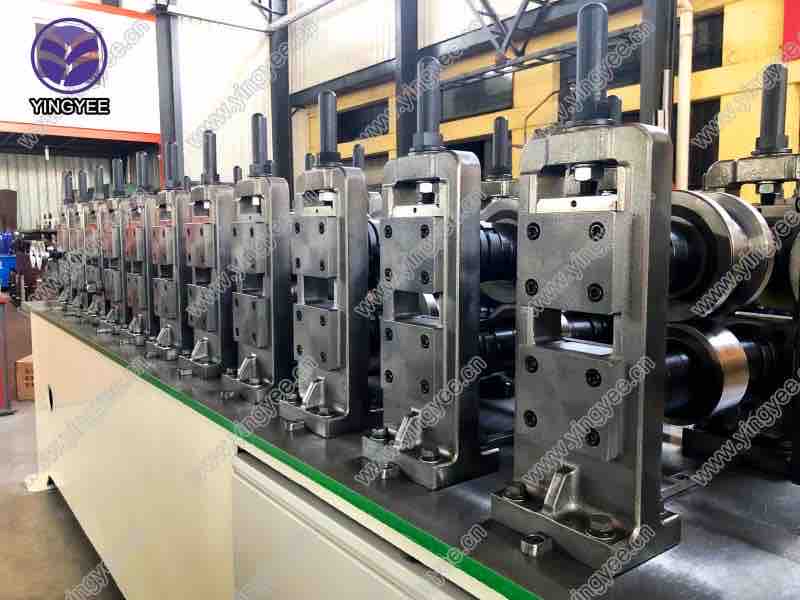
The Benefits and Applications of Automatic Steel Frame Roll Forming Machines
In the construction industry, the demand for high-quality materials is always on the rise. One such innovation that has gained significant traction is the automatic steel frame roll forming machine, specifically designed for the production of stud and track systems, C channels, drywall frames, main furring, and wall angles. These machines streamline the manufacturing process, enhancing efficiency and reducing costs while maintaining the structural integrity necessary for modern construction projects.
Understanding Roll Forming Technology
Roll forming is a continuous bending operation in which a long strip of metal, typically steel, is shaped into specific profiles. Automatic roll forming machines automate this process, utilizing advanced technology to produce consistent and precise steel components for various applications. This method is highly efficient, allowing manufacturers to produce large volumes of steel frames in a fraction of the time compared to traditional methods.
Key Features of Automatic Steel Frame Roll Forming Machines
1. Precision Engineering Automatic machines are designed to deliver highly accurate dimensions and profiles. This precision is crucial for applications in structural framing, where even minor deviations can compromise the overall integrity of the construction.
2. High-Speed Production These machines can operate at high speeds, increasing the output rate significantly. As construction projects often run on tight deadlines, the ability to produce materials quickly is a considerable advantage.
3. Versatility Automatic steel frame roll forming machines are adaptable, allowing manufacturers to create various profiles such as C channels, studs, tracks, and angles. This versatility means that a single machine can service multiple projects and requirements.
4. Material Efficiency With the capability to utilize high-strength steel, manufacturers can produce lighter, yet equally strong, structural components. This leads to reduced material wastage and lower transportation costs due to the lightweight nature of the final product.

5. User-Friendly Interface These machines often come equipped with advanced software and a user-friendly interface that simplifies operation. This means that operators can easily adjust specifications and monitor the production process in real-time.
Applications of Steel Frame Components
The products generated by these machines are integral in various construction applications
- Residential Buildings Steel frames are increasingly used in residential construction due to their durability, resistance to pests, and lower maintenance requirements compared to traditional wood framing.
- Commercial Structures Many commercial buildings utilize steel framing for its strength and design flexibility, allowing architects to create wider spaces without the need for additional support.
- Interior Partitions Steel studs and tracks are essential for partition walls in both residential and commercial spaces. They provide the necessary support for drywall installation while ensuring long-term stability.
- Industrial Uses In industrial settings, steel frame components are used extensively for warehouses, factories, and other large-scale facilities due to their load-bearing capabilities.
Conclusion
The introduction of automatic steel frame roll forming machines presents a transformative approach to construction material production. With their ability to enhance efficiency, precision, and versatility, these machines not only meet the industry’s growing demands but also pave the way for innovative construction practices. As the construction landscape continues to evolve, the role of advanced manufacturing technologies like roll forming will undoubtedly expand, facilitating the development of stronger, more resilient structures for the future.